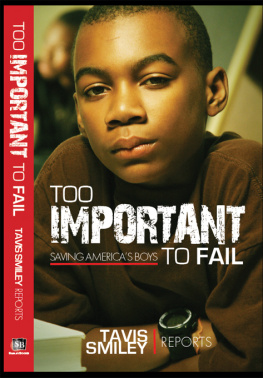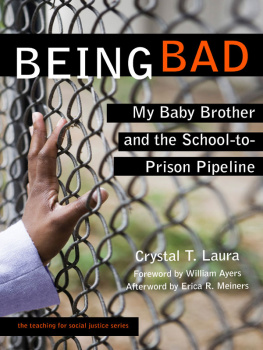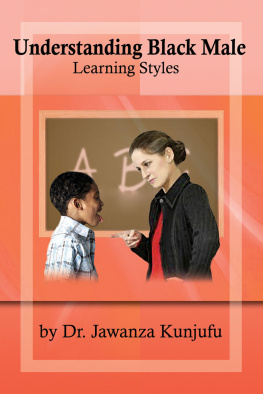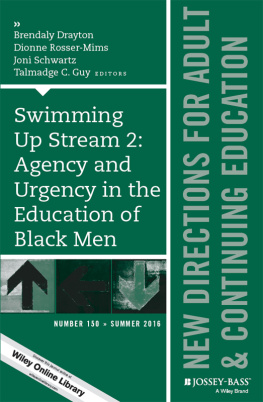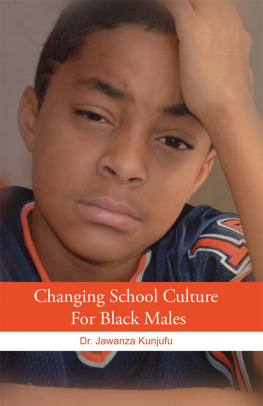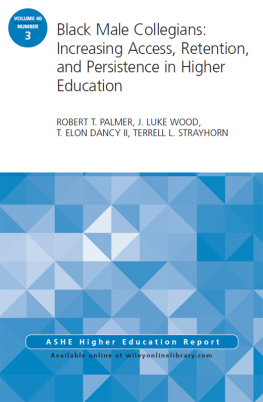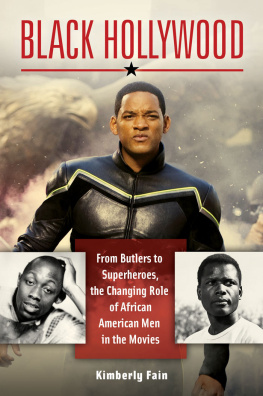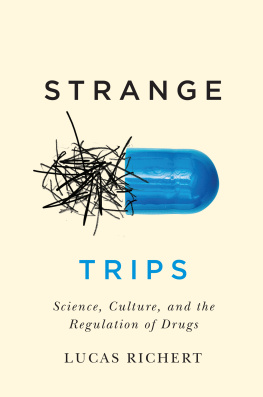First Published 2009
by Paradigm Publishers
Published 2016
by Routledge
2 Park Square, Milton Park, Abingdon, Oxon OX14 4RN
711 Third Avenue, New York, NY 10017, USA
Routledge is an imprint of the Taylor & Francis Group, an informa business
Copyright 2009, Taylor & Francis.
All rights reserved. No part of this book may be reprinted or reproduced or utilised in any form or by any electronic, mechanical, or other means, now known or hereafter invented, including photocopying and recording, or in any information storage or retrieval system, without permission in writing from the publishers.
Notice:
Product or corporate names may be trademarks or registered trademarks, and are used only for identification and explanation without intent to infringe.
Library of Congress Cataloging-in-Publication Data
Fitzgerald, Terence D.
White Prescriptions: black males and the dangerous social potential of Ritalin and
other pscyhotropic drugs / By Terence D. Fitzgerald.
p. cm.
Includes bibliographical references and index.
1. African American high school studentsSocial conditions. 2. African American
high school studentsMedicine. 3. African American high school studentsDrug
use. 4. Problem youthUnited StatesEducation. 5. Problem youthUnited States
Behavior modification. 6. MethylphenidateSide effects. 7. Psychotropic drugsSide
effects. 8. Social controlUnited States. 9. Behavior disorders in adolescence
United States. 10. Racism in educationUnited States. 11. Racism in medicine
United States. 12. Medical misconceptionsUnited States. 13. Medical ethicsUnited
States. I. Title.
ISBN 978-1-59451-689-4 (hardcover: alk. paper)
LC2779 .F58 2009
362.196/86008996073 22
2009004023
Designed and Typeset by Straight Creek Bookmakers.
ISBN 13: 978-1-59451-689-4 (hbk)
ISBN 13: 978-1-59451-690-0 (pbk)
Walls: some are obvious and easily detectable by the human eye. Others are indiscernible but still present, serving a particular function in our social surroundings. Regardless of their appearance or our ability to detect them, they are and will forever be with us, and they often loom tall upon the trails of our lives. Walls may be erected throughout the empty spaces in the physical and social contexts of our societies, between people, and inside the souls and proverbial hearts of us all. There is nowhere to run: it is impossible to hide from these sturdy edifices. Walls are at times composed of brick, stone, or other natural materials, constructed and handcrafted in such a way that their final shapes are essentially seen as physical and emotional dividers and, at the same time, as enclosures. Others that are less physically apparent but still divisive in function are represented in the emotional walls we conjure internally and often project externally in numerous ways in order to impede emotional and human connectivity to others due to their skin tone or their opposing ideologies, mores, and/or norms.
Men and women construct walls tor a particular purpose, and they are ultimately responsible for the consequences of the formation and possible failure of the structures they Create. Such configurations are at times erected in accordance with an underlying principle of protecting; they are barricades against outside forces that have a perceived natural ability to destroy something that has been created, maintained, and cherished. The levees that were intended to protect the people of New Orleans easily come to mind. Other examples include the Berlin Wall and the newly designed wall that is supposed to clearly separate Mexico and the United States, thus decreasing the rate of passage of so-called illegal immigrants. Finally, the manned, armed, and divisive structure that thwarts the Palestinian people from having equal and free access to segments of Israel can be included in this category. In essence, the Berlin Wall, the proposed giant walls along the 2,000-mile border between Mexico and the United States, and the Israeli West Bank barrier serve to deny access to those seen as a threat. The principles buried in and bonded to the twisted materials used to build such structures simply communicate, to those who wish to listen, the intention to "block out" and disconnect physically and psychologically from what the builders demonize as undesirables in a society The builders of these walls are powerfully motivated by the desire not to merge with those they see as unfit for the domains they have created, maintained, and cherish.
The preeminent rationales for construction in the previous examples are to control the movement of those deemed undesirable and, at times and for certain groups seeking division, to cut off the accessibility of those seen as too ghastly to live among. This situation has historically been evident in the socially constructed hierarchy in the United States between Whites and those they see as inferior. Of course, the story of division, control, oppression, and racism has been edited and rewritten every so often throughout history to add new antagonists and protagonists to the American story. This occurs, for instance, whenever new people who are not White (that is, not Anglo-Saxon Protestant) arrive and wish to become part of the national fabric and in turn hope to be allowed equal access to the resources that Whites have historically monopolized. The spoils allotted to them through the physical, emotional, and economic conquest of this society are theirs to keep. Examples in the United States can be seen in the once hated and currently accepted people of Irish, German, and Italian ancestry. The story of Blacks in the United States, however, reads more like a never-ending, tragic saga: Blacks have been denied the happier endings that members of other racially identified groups have found.
Through scholarly work, societal observations, and personal experience of the pains endured by people of color, I have deduced that the physical, psychological, and socially constructed walls created by the elite Whites and other less powerful Whites in the United Stateswho overtly and covertly benefit from the existsence of these wallsnot only target people of color but also and more than sporadically objectify Black males in particular, in order to impose an even harsher degree of control. Evidence for this assertion is written in blood and tears upon the pages of the book of America. The targeting can be seen, for example, in the justice system. The Bureau of Justice Statistics (BJS) noted that at the end of 2006, there were 2,385,216 prisoners incarcerated in both federal and state correctional facilities across the United States.been erected in the prison industrial complex itself, for these facilities house a disproportionate number of Black and Hispanic males. It was once estimated that Black males are 8.2 times more likely than White males to be incarcerated. The Policy Institute, a think tank, noted that 10.4 percent of the entire Black male population between the ages of twenty-five and twenty-nine is incarcerated, in comparison to 2.4 percent and 1.2 percent for Hispanics/Latinos and Whites, respectively. More specifically, the institute reported in 2005 that in Baltimore, Maryland, 52 percent of Black males were incarcerated. For youths, a report prepared in 2007 by the same group, called The Consequences Aren't Minor: The Impact of Trying Youth as Adults and Strategies for Reform, reported that the juvenile inmate population has increased 208 percent since 1990. Once again, a disproportionate number of these males are Black. This profile is replicated throughout the United States. Despite the outcomes from the social and civil rights movements of the 1950s and 1960s, the institutional disparities continue to devastate non-White populations and dominate the apartheid structure in this country. Where else is the targeting occurring? In the chapters to come, this question will be explored in depth, specifically within the institution of public education as it relates to Black school-age males.


